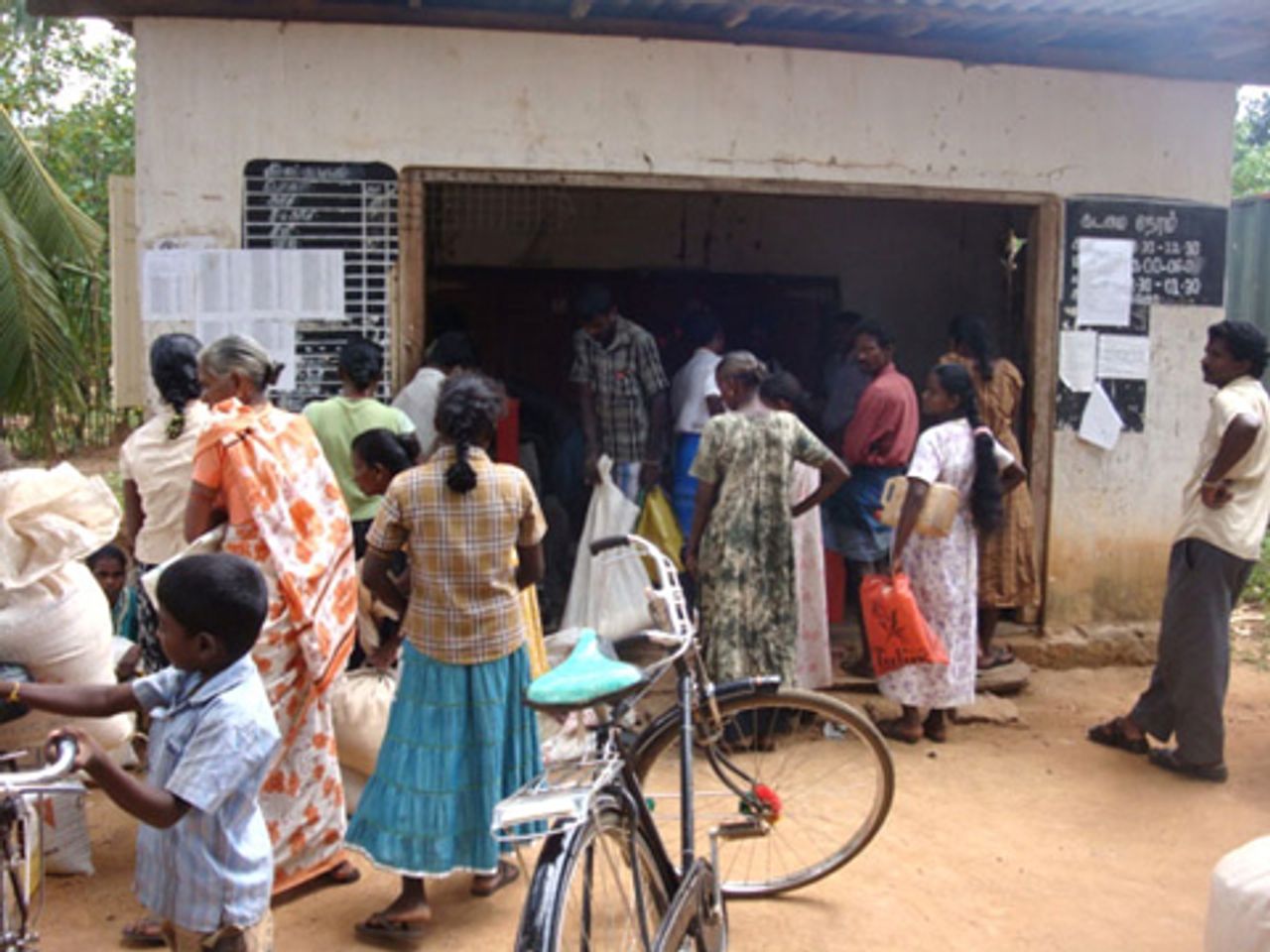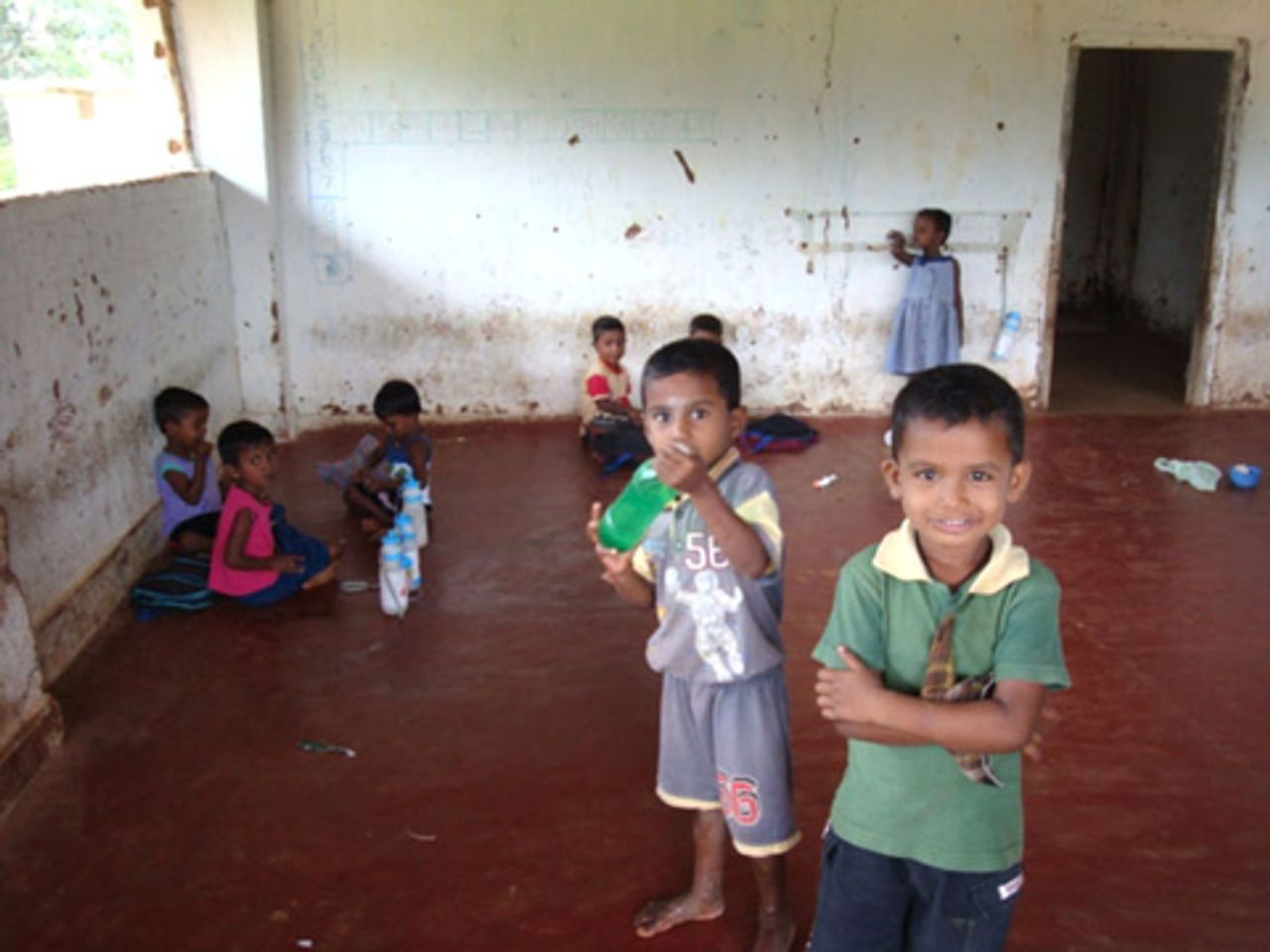Following the defeat of the separatist Liberation Tigers of Tamil Eelam (LTTE) in May last year, the Sri Lankan government detained about 280,000 Tamil civilians from the northern Vanni region in huge military-controlled camps. After many months of incarceration, in violation of their fundamental legal and democratic rights, detainees were later “resettled” in designated areas or consigned to “transit camps”. According to the government, around 20,000 people are still living in the military-run detention camps.
On November 3, Economic Development Minister Basil Rajapakse, the brother of President Mahinda Rajapakse, fraudulently claimed that “Sri Lanka has kept a unique record by resettling IDPs [internally displaced persons] within a short period of time.” He insisted that “the government is committed to improve the life of the resettled people”.
However, the situation on the ground is appalling. Detainees have been left without proper facilities, including houses. In order to conceal these conditions from the outside world, the government has imposed restrictions on the media visiting these areas. A WSWS team travelled to the region recently and compiled the following report.
****
Vattakachchi is a large rural area about 8 kilometres east of Kilinochchi town in northern Sri Lanka. It is one of the districts in the Vanni region that bore the brunt of 30 years of communal war, instigated and driven by the Colombo political establishment. Along with other parts of the Vanni region, Vattakachchi was devastated during the final phase of the Sri Lankan military’s offensive that reached here in December 2008.
About 7,000 people lived here. Many joined the hundreds of thousands who fled the indiscriminate attacks of the advancing military. People trekked from one place to another, mainly on foot, until they reached Mullivaikkal in the Mullaithivu district, where the army’s final attacks took place. We met people who had seen thousands of people killed and maimed, including their loved ones, during the military’s barrages.
After being detained for months in huge military-controlled camps, some people were “resettled” in villages in the Vattakachchi area. No one knows what has happened to the many others who have not returned. Many residents are now widows or widowers. Some young people were dragged off to secret detention camps as LTTE “suspects”.
On our way to Vattakachchi, near a place called Thiruvaiyaru Kanagapuram, we saw wrecks of war-damaged vehicles that had been abandoned by fleeing civilians. It was a few kilometres from the Iranaimadu Tank—a large artificial lake that is famous for inland fishing. Now the army is guarding the tank, which also provides water for agriculture.
Fishing has been banned for the many Tamil families who once relied upon it for their livelihoods. The army has also occupied the living quarters for irrigation department employees. People are allowed to enter the Hindu temple only at times of worship. A Buddhist temple has been built by the army—another sign that the military occupation will be permanent.
We stayed in one family’s hut. It was only about 10 square metres. The roof was made of coconut leaves, with walls of mud and sticks. The floor was also mud-based. There was a smaller hut used as a kitchen. In the whole district, we only saw huts with tarpaulin or coconut-leaf roofs. When it rains, the huts become muddy. Rain floods the low-lying huts and strong winds often take off the makeshift roofs. Because the huts are so small, some people sleep in the kitchens. Now and then, we saw people living in half-damaged or partly-repaired houses.
There is no electricity in the area. Even to use a mobile phone, residents must pay a private generator owner a fee of 20 rupees (17 US cents). Villagers have no access to television or even newspapers.
 Outside a cooperative store
Outside a cooperative store
People were brought back here about six months ago, but nothing has improved since. Very few resettled people have any means to earn a living. Some are working on low-cost housing sites, still uncertain about their jobs.
An unemployed worker told us: “My wife got injured in the stomach at Mullivaikkal. I tried to bring her to a government-controlled area for treatment but the LTTE stopped us. I later got to a government-controlled area with other people. The army took my wife, saying they were going to provide her with medical treatment. I was detained in a camp with our one-year-old son. I appealed to the army and civil officers to allow me to leave and search for my wife but I was not allowed. After we were released, I began to search for her and I am still searching.”
The only government dispensary in the area opens for just three hours a day, two days of the week. This dispensary is supposed to serve around 7,000 people, including in Ramanathapuram and Kalamadu in addition to Vattakachchi, but it is totally inadequate.
Taking a patient to Kilinochchi is a nightmare. The access road is so bumpy that the maximum speed of a vehicle is about 5 kilometres per hour. Even though there is supposed to be a bus running between Kilinochchi and Vattakachchi every hour, people often have to wait many hours.
The villagers’ main meal is rice with dhal or coconut sambol. They get small amounts of dry rations from the UN’s World Food Programme. But people often sell their rations to buy cheaper food or raise money for other needs. Some people have started cultivating rice but with much difficulty, since they lack adequate equipment, manure and seeds.
We visited Mayavanoor South village, on the southern boundary of the Vattakachchi area. Villagers have to walk about 500 metres to fetch water. There are no toilets. Residents have to walk 3 kilometres to catch public transport to Kilinochchi. Earlier, the villagers used bicycles but they lost them all during the war.
 Inside a nursery school
Inside a nursery school
Mayavanoor South village school has only five teachers for several hundred children, from grades one to five. It has a roof thatched with coconut leaves. Class rooms are divided by tin sheets. Teachers told us they were ordered by the education department not to give any details and not to allow any media photos.
One voluntary teacher, however, told us her story. “We fled to Mullaithivu as refugees. My husband was shot and killed on the spot by the military. We buried him there and went to the government-controlled area. I have been teaching for many years. Previously I was paid an allowance of 3,000 rupees but now I get no allowance. I continue teaching without pay in the hope of getting a permanent appointment.”
We came across a functioning Montessori school, which previously had been abandoned for a long time. Two teachers were there but no one paid them. One teacher was a war widow with two children. Her husband had died in a shell attack by the Sri Lankan military. Around 70 children were registered but only around 40 were attending. The children’s parents were not in a position to pay the teachers. Some children were even coming to the school without meals. These children have no drinking water, toilet facilities, desks, chairs or play things.
The situation in villages throughout the Vanni is much the same. People are angry about the devastation caused by the military, and the government’s false promises, as well as the role of the Tamil parties, including the Tamil National Alliance (TNA), previously a political proxy for the LTTE.
One villager told us: “The LTTE controlled the people with repressive methods. Now people are afraid to speak because of the military. The war is over, yet our problems remain the same. TNA MPs visit here to pretend that they are interested about us. But they cannot do anything for us.”
Since the LTTE’s defeat, the TNA has expressed its willingness to collaborate with the Rajapakse government. When TNA parliamentarians visit people they claim they can change the situation by speaking to the government. The TNA has also sought the help of the Indian government and the Tamil Nadu ruling party, Dravida Munnethra Kazhagam, to put pressure on Colombo to agree to a “political solution” for Tamils.
By a “political solution” the TNA and other Tamil capitalist parties mean the devolution of certain powers to them in Sri Lanka’s north and east, to provide privileges for the Tamil elite. The TNA issues statements on the plight of Tamils in the Vanni, but its real interest is in cutting a deal with the government.
